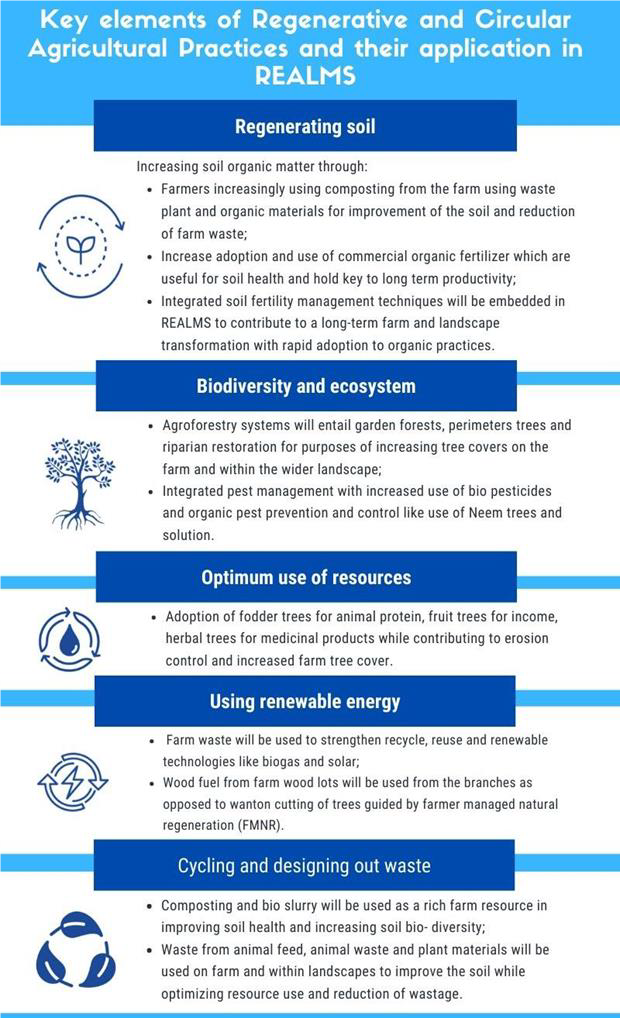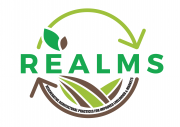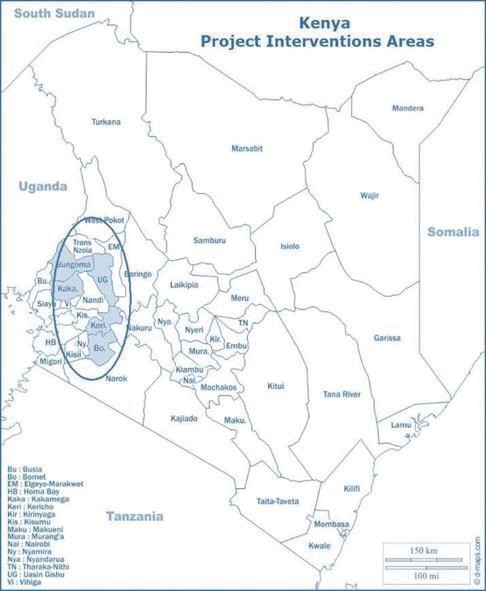Doing the Right Thing, At the Right Time
There are many definitions and perspectives on regenerative agriculture , where sometimes a distinction is made between regenerative and circular practices. REALMS project has proposed some of the practical technologies that will actively promote in the project areas.
Regenerative agriculture includes a set of practices that restores the soil and biodiversity at the farm, while circular agriculture is a set of practices based on principles of nutrient recycling, optimal use of resources, biodiversity and use of renewable energy.
REALMS will support the adoption of both regenerative and circular agriculture practices at the farm level with a focus to influence production and encourage service providers (SMEs) to supply the required products and services. Advocacy will go beyond the farms and businesses to include all relevant stakeholders including government, civil society organizations, industry associations, research and educational institutes.
Examples of specific circular practices are:
- Recycling and designing out waste through composting farm wastes such as Stover and animal waste to manure, and use of crop residue for animal feed,
- Optimal use of resources at the farm level and by businesses such reducing post-harvest losses by producing quality marketable products, diversifying markets for full utilization of farm produce, use of high quality
- inputs to reduce the quantities needed, businesses pooling transportation of produce to reduce costs, renting or sharing of farm equipment;
- Increasing diversity through mixed cropping and crop rotation to take advantage of seasonal changes, agroforestry and mixed cropping systems for multiple sources of foods for the households;
- Use of renewable energy such as biogas or solar systems and wood fuel from agroforestry trees.
Regenerative practices are for example:
- Farmers setting soil and water conservation structures to stop erosion and pollution of water bodies by siltation;
- Farmers reducing the use of chemical fertilizers and increasing the use organic fertilizer from farm compost, animal manure, vermicomposting, and commercial organic fertilizers;
- Farmers using commercially available beneficial microorganisms such Mycorrhizae and Trichoderma soil fungi products that improve plant growth;
- Integrated Pest Management (IPM) measures where farmers reduce the use of chemical pesticides and substitute or complement these with bio-pesticides, mechanical and cultural methods of pest control to encourage beneficial insects such as bees and butterflies to thrive;
- Agroforestry systems to increase tree to increase tree cover and improve ecosystems functions that trees provide



